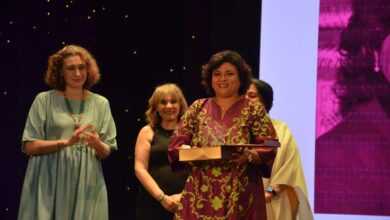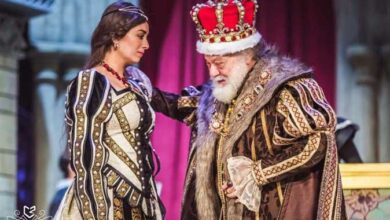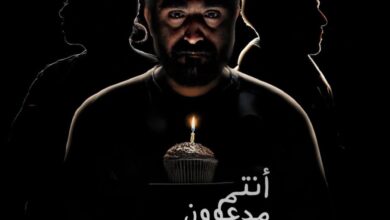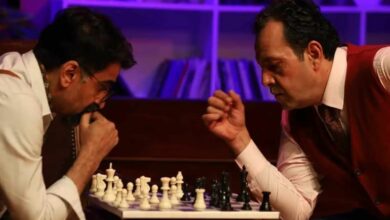"A theater that doesn’t reflect the social and historical concerns and tragedies of its nation and the true colors of its horizons and thoughts doesn’t deserve to be called a theater," said Federico Garcia Lorca, the legendary Spanish poet and dramatist.
Rasha Abdel Monem, a critic and playwright who belongs to Egypt’s free theater generation (also known as "independent," "alternative theater," or "the third road"), introduces her book–which includes seven new theater pieces for independent theater troupes in 2007– with the above quote from Lorca.
Abdel Monem writes that contemporary free theater first emerged in the late 1980s with the appearance of a handful of theater troupes. Independent theater troupes were formed by artists not accommodated by the Egyptian national theater or private theaters. Those artists either had bold political and social visions and their desire to escape censorship produced a new, and unwelcome, formula for the theater, or they were unable to join the national and private theaters whose membership was more or less closed to certain people.
According to Abdel Monem, Egyptian theater flourished in the 1960s and boasted a fine level of sober artistic performance. The audience, formed mainly of the then-strong middle class, helped theater thrive at this time, she says, since the middle class regarded theater as a sacred place from which values could be derived and beliefs reinforced.
Several subsequent changes that rocked Egyptian society tampered with its values and beliefs, starting with Egypt’s defeat in 1967 all the way to the open-door policy adopted by Sadat and the bourgeoisie it created.
All those changes led to the rise of private theater and tourist theater, at the expense of more serious performances. Then the Wahhabi wave from the Arab Gulf swept through Egypt, further weakening the middle class. Followed by the so-called information and technology revolution, this destroyed whatever had remained of communication channels between artists and the middle class, as cinema and television stole the limelight from the theater, killing any chance for live theatrical interaction with audiences.
Independent theater thus came along in the late 1980s and helped build bridges with theater fans, once again presenting shows that audiences could identify with.
The new theater movement was accompanied by new theoretical writings by some of the leading thinkers and critics of the time. This forged a link between the theater movement and social and political variables at the time of its emergence. But the irrational implementation of ideas eventually caused the independent theater movement to be accused of compromising its independence, of following the state on occasions, and of attempting to gain foreign support on others.
The independent theater troupes have been struggling since the 1990s, their confusion exacerbated by a scarcity of opportunities, which gave way to bitter competition. Many of them, as a result, fell apart, while others endured and new groups appeared on the artistic scene.
El-Hanager Artistic Center has breathed life into those otherwise dead troupes, providing them with the opportunity to present their plays independently and allowing a dialogue between various forms of art through its forums and formative art galleries. El-Hanager’s theatrical workshops, which hosted some of the most experienced local and international artists, groomed many of the artists of today.
Sadly, though, relations between the free theater troupes still lack trust. In 2002, the term properly evolved into "independent theater" after a series of meetings between ten free troupes. The meetings discussed the troupes’ internal problems, including questions related to the "identity" of those troupes. Should they form a union, company or an association? Are the troupes legitimate? These were pivotal questions, whose answers determined how the groups would receive funding.
Only el-Warsha troupe was registered as an institution with the right to receive funding, yet it failed to convince the other troupes that it would receive funding and pass it on to them. Same went for el-Haraka troupe, who attempted to establish a non-profit company, but failed for the same reason–there was always a lack of trust. Three of the troupes–el-Shazya, el-Eqterab and Atelier el-Masrah–tried to use the enthusiasm generated by the meetings to once again launch the free theater festival, but the other troupes declined to be involved in any activity under the name "free theater."
El-Shazya and Atelier el-Masrah were so determined to revive the festival that they decided to inaugurate what they called the "first Independent Festival for Light Comedy" in 2002. The festival was initially planned as a two-day event, but as other troupes joined the festival, three plays were presented over five days, and the festival managed to attract a wide audience. The festival then came to be known as the "Spring Festival."
As such, independent theater can be said to have evolved from the free theater movement. The success of the independent theater gave rise to a new wave of theatrical troupes, and several theaters in Egypt now consider themselves part of independent theater, which has been reflected in later festivals, despite splits between the troupes.
For the Egyptian regime, the word "independent" essentially translates into "opposition." As such, independent performers must either abandon the theater or are forced to surrender "their independence" and go with the mainstream, presenting plays that lack imagination, vision and plot, yet are promoted by the media as masterpieces. But the changed term seemed to trigger a movement that encompassed all performing arts, with new bands and independent movies setting foot on the artistic scene.
There are also problems of funding, which is mostly derived from non-governmental organizations, who provide funds of around US$1000. This method of funding suits amateurs. Troupes have attempted to present plays together, to be able to receive funding from several different sources. However, it’s almost impossible to persuade a sufficient number of entities to fund a project. Therefore, it becomes difficult to present professional independent theater performances.
As independent theater gained a wider audience over the years, Amani Abdel Hamid, a journalist from el-Mosawar magazine, organized a meeting between Minister of Culture Farouk Hosni and one of the founders of an independent troupe. During the meeting, the minister said that his ministry had a responsibility toward independent theater as part of Egyptian theater.
Nine troupes were to be funded, with the idea of providing a place for them to train and run their operations. The cultural development fund agreed to provide annual funding to nine troupes: LE20,000 for "serious" old troupes and LE10,000 for new "serious" ones.
However, when the troupes solicited the help of the cultural development fund and were ready with their theatrical projects, the fund officials asked them, "Do you want us to give you money so you will just go and rent some furnished apartment?" They say that they were unable to go back to the minister, for even though he sympathized with them, he was unable to do anything more.
Then there’s also the problem of censorship. Independent troupes don’t understand the logic governing the censor’s scissors, which tend to give commercial movie productions a margin of freedom considerably greater than that for independent cinema and theater. Even university theater troupes perform under the scrutiny of security forces. Directors of cultural centers also tend to dictate certain ideas and techniques to performers, and serious troupes are ignored.
Independent theater performers are struggling in the face of all these hardships. But still, independent theater is still of importance in Egypt over the past 20 years, in terms of the value it presents and the techniques it employs, and el-Hanager Center continues to be its ultimate supporter.




